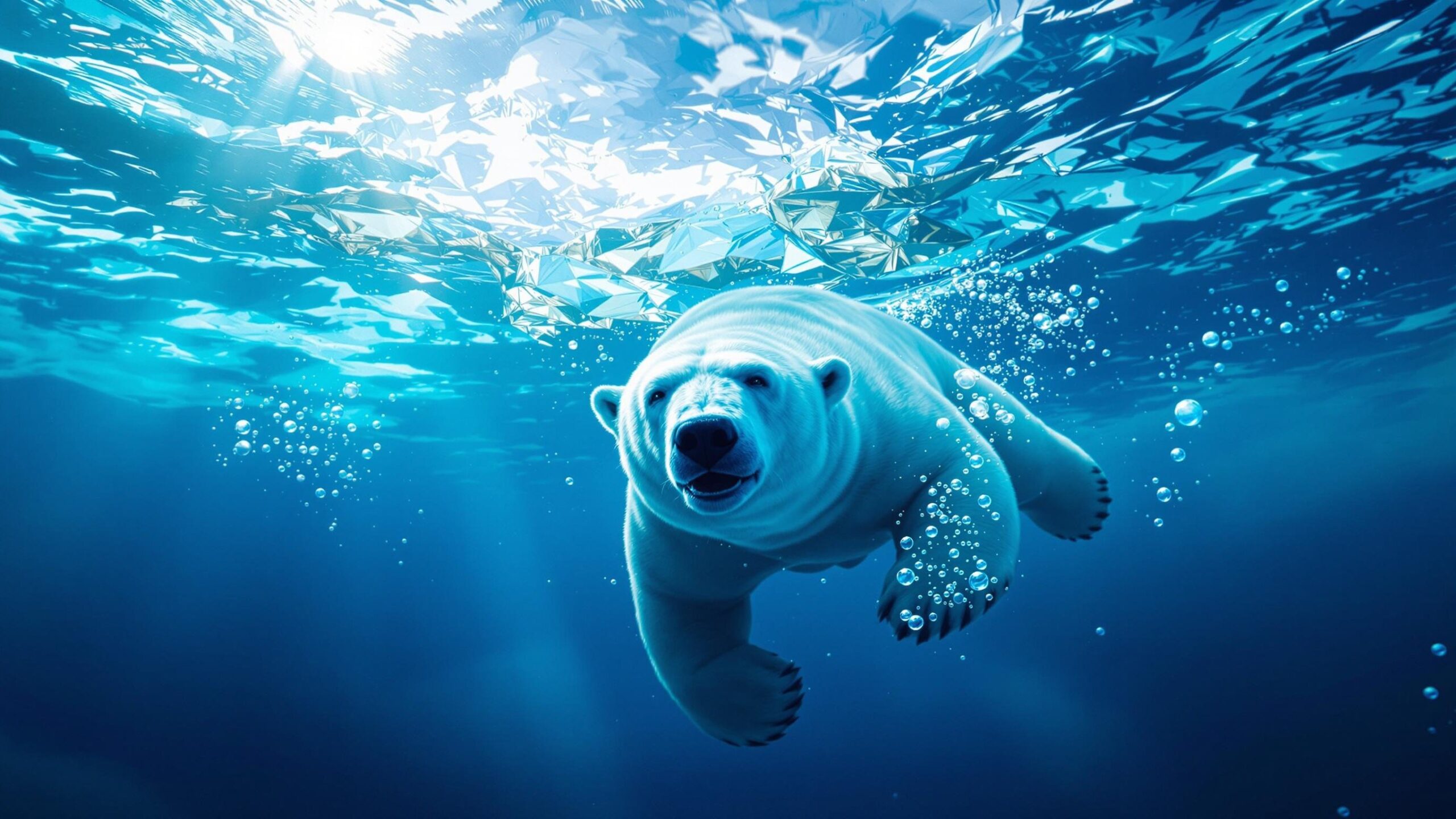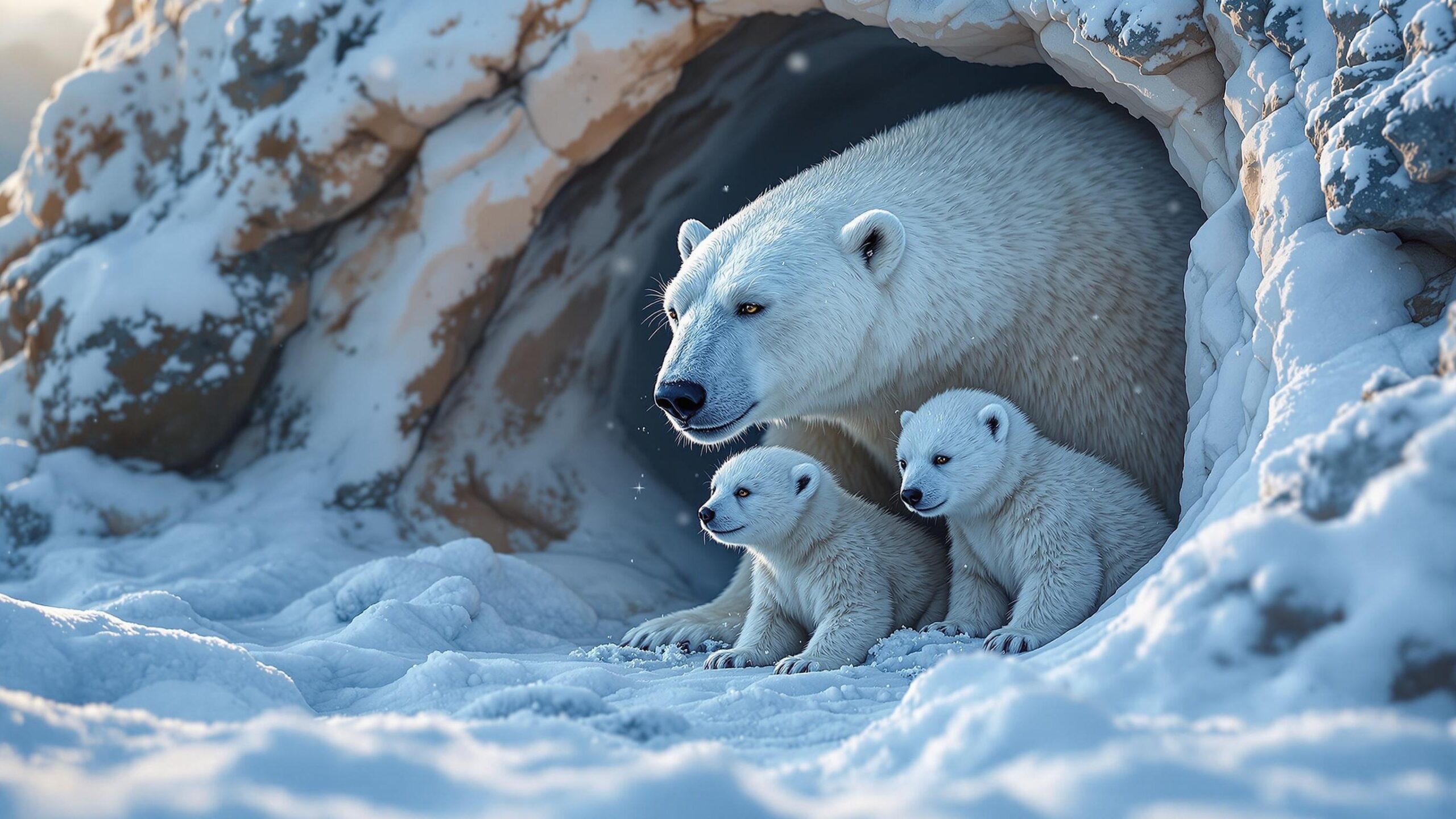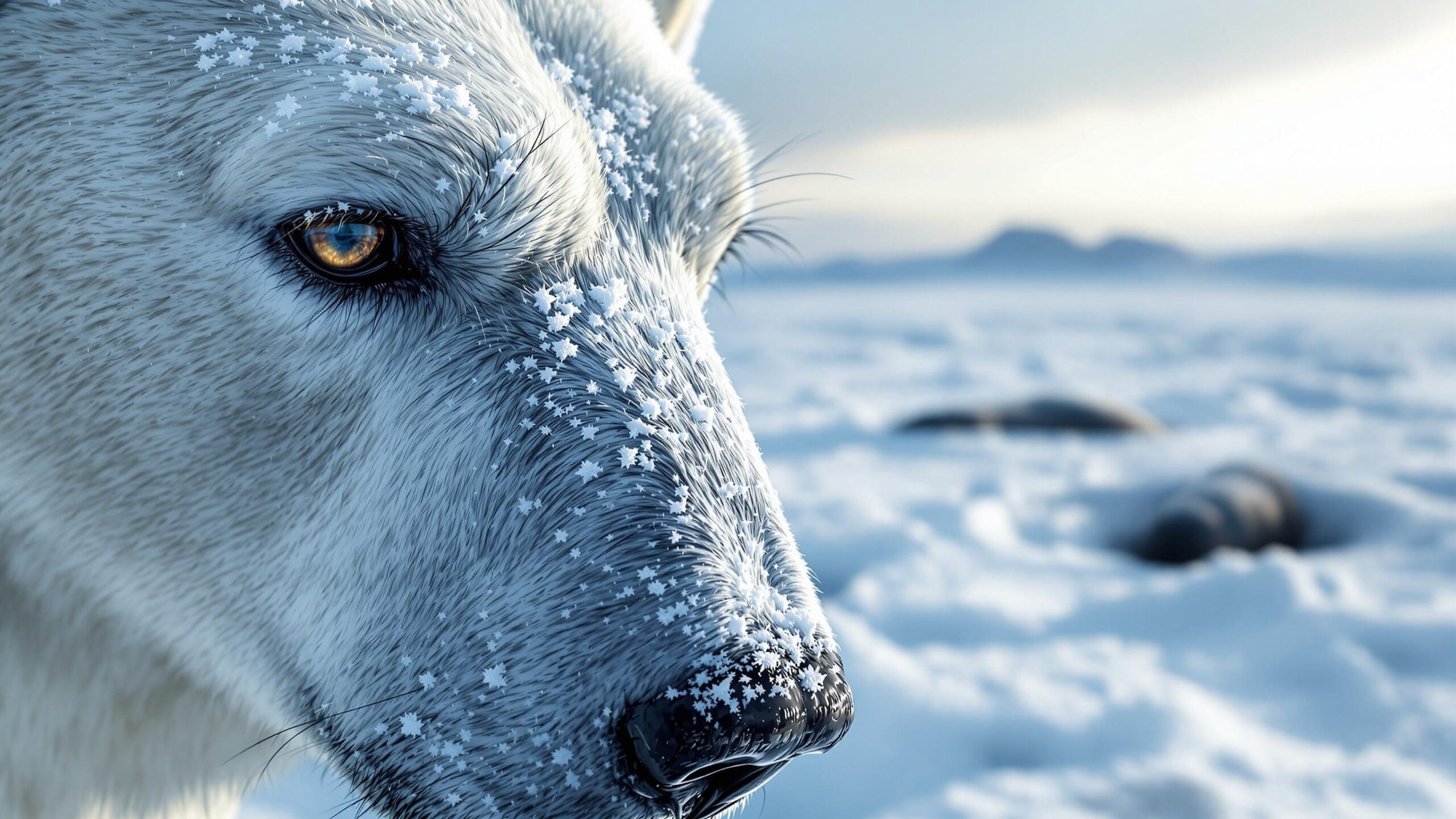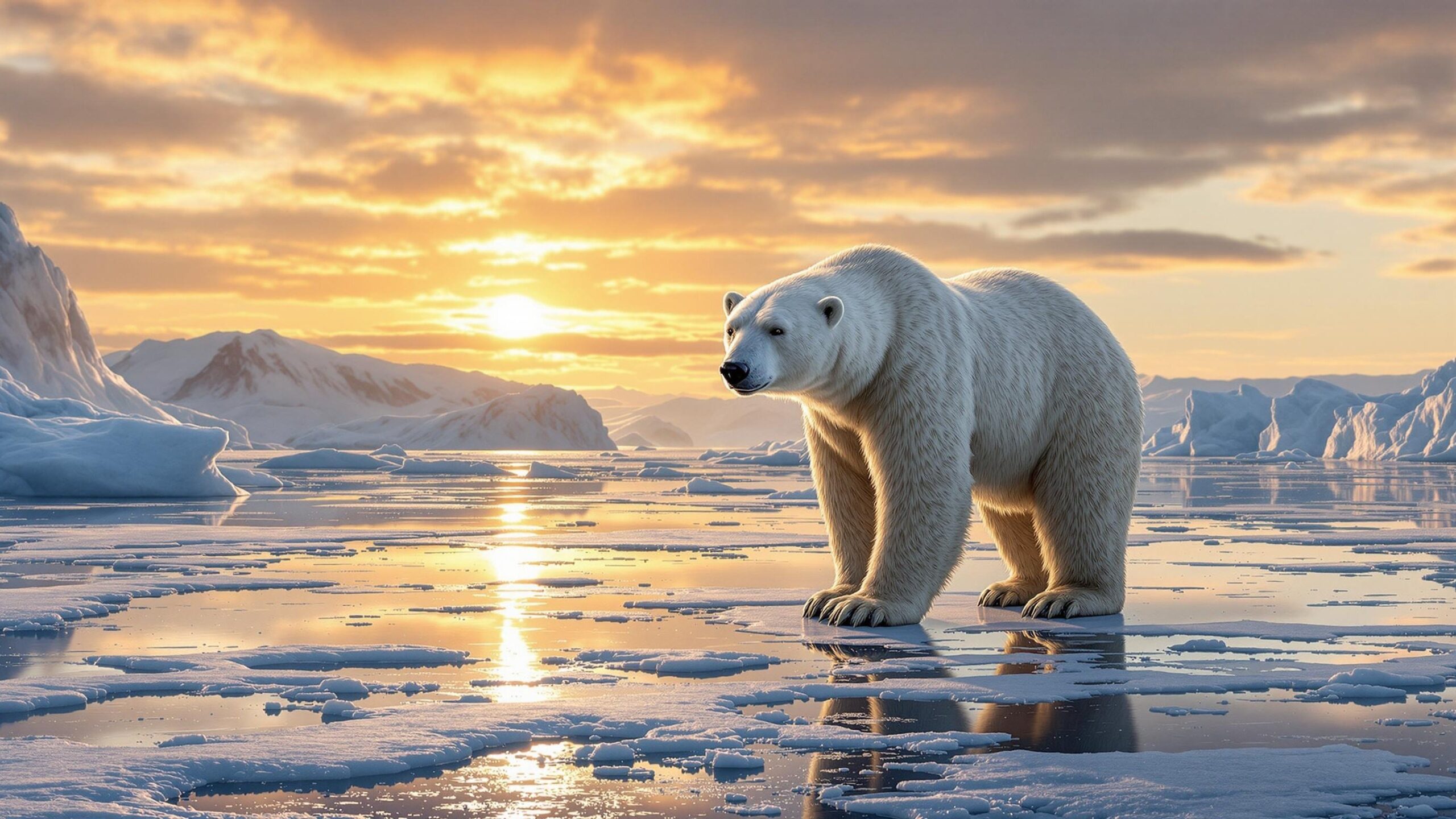Polar Bear: The Arctic Giant of Ice and Survival
The polar bear, known scientifically as Ursus maritimus, is one of the most iconic and awe-inspiring creatures to roam the Arctic. With their stark white coats, unmatched swimming skills, and formidable hunting abilities, polar bears symbolize the raw power and resilience of life at the edge of the world. As the largest land carnivore on Earth, the polar bear is a top predator in its frozen domain and a master of survival in one of the harshest environments on the planet. This article takes you on an in-depth journey into the world of the polar bear, exploring its biology, behavior, habitat, diet, and the unique challenges it faces today.
The Arctic Habitat: Home of the Ice Bear
Polar bears are perfectly adapted to life in the circumpolar north, inhabiting the sea ice regions of the Arctic Ocean and surrounding coastlines. Their range includes Canada, Greenland, Norway (particularly the Svalbard archipelago), Russia, and the U.S. state of Alaska. These bears depend on sea ice not only as a platform from which to hunt seals—their primary prey—but also as a highway to travel vast distances in search of food and mates. The sea ice environment is dynamic and ever-changing. It expands and contracts with the seasons, forcing polar bears to move constantly. In winter and spring, when the ice is at its maximum extent, the bears range widely. In summer and early fall, when the ice melts and retreats northward, polar bears in some regions become stranded on land, where food is scarce and survival becomes more difficult.
A Body Built for the Cold
The polar bear’s physiology is a marvel of adaptation. Adult males, or boars, can weigh anywhere from 900 to 1,600 pounds and measure up to 10 feet in length when standing on their hind legs. Females, or sows, are smaller, usually weighing between 400 and 700 pounds. Despite their size, polar bears are surprisingly agile, capable of running up to 25 miles per hour for short distances and swimming for hours at a time. A thick layer of blubber beneath the skin provides insulation in frigid waters, while the bear’s fur, though white in appearance, is actually translucent and hollow, designed to trap and radiate heat from the sun. Beneath the fur, the bear’s skin is black, helping to absorb heat more efficiently. The massive front paws—nearly a foot wide—function like snowshoes on land and paddles in the water, allowing the bear to glide powerfully through icy seas.

Master Hunter of the Ice
Polar bears are hypercarnivores, and their diet consists primarily of seals, particularly ringed seals and bearded seals. They rely on sea ice to catch their prey, using a method called still-hunting. The bear patiently waits by breathing holes in the ice, often for hours, until a seal surfaces for air. With lightning-fast reflexes, the bear snatches its unsuspecting prey and drags it onto the ice.
The high-fat content of seal blubber provides essential energy for survival, especially during the lean summer months when hunting becomes more difficult. Polar bears often eat only the blubber and leave the rest of the carcass, which benefits other Arctic scavengers like Arctic foxes and gulls. In some regions, bears have been known to hunt walrus calves, beluga whales, and even reindeer, though these are less common. When food is scarce, polar bears have been observed scavenging carcasses or seeking out human waste. Such behavior is a sign of increasing pressure due to changing environmental conditions, particularly the loss of hunting grounds caused by melting sea ice.
Solitary Wanderers with Powerful Instincts
Polar bears are largely solitary animals, except during mating season or when a mother is raising cubs. They have a keen sense of smell, capable of detecting a seal nearly a mile away or beneath three feet of snow. Their hearing and vision are also well-developed, aiding in both hunting and navigating the icy terrain. Mating occurs in late spring and early summer. Once impregnated, a female polar bear will delay implantation of the fertilized egg until autumn—a process known as delayed implantation. She will then find a snow drift or den site to hibernate and give birth during the winter months, usually to one or two cubs.
The cubs, born blind and weighing about one pound each, nurse on their mother’s rich milk and remain in the den for several months. When spring arrives, the family emerges, and the mother leads her cubs to the sea ice to teach them the art of hunting and survival. Cubs stay with their mother for up to two and a half years, learning vital survival skills before venturing off on their own.

Life on a Melting Edge: Climate and Conservation
No discussion of the polar bear is complete without acknowledging the significant challenges posed by climate change. Sea ice is the cornerstone of the polar bear’s survival, and it is disappearing at an alarming rate due to rising global temperatures. As ice-free periods grow longer, bears are forced to travel greater distances and expend more energy to find food. In some regions, body condition and cub survival rates have declined, and interactions with humans have increased as bears spend more time on land. Though polar bears are currently classified as “Vulnerable” on the IUCN Red List, regional populations show varying trends. Some remain relatively stable, while others are in decline. Conservation efforts focus on habitat protection, research, minimizing human-bear conflicts, and global initiatives to reduce greenhouse gas emissions. It’s worth noting that polar bears are also protected under international agreements, such as the 1973 Agreement on the Conservation of Polar Bears, signed by the five polar bear range nations. These measures emphasize the importance of scientific research and cooperative management among countries that share the bear’s Arctic home.
The Role of the Polar Bear in Indigenous Cultures
For thousands of years, Indigenous peoples of the Arctic—including the Inuit, Chukchi, and Inupiat—have lived alongside polar bears and developed a deep respect for these powerful animals. In many traditions, the polar bear is not only a source of meat, clothing, and tools but also a spiritual symbol of strength, courage, and resilience. Traditional ecological knowledge passed down through generations has helped researchers understand polar bear behavior, movements, and population health. Today, many conservation programs collaborate closely with Indigenous communities to ensure that scientific research is both informed by and respectful of local knowledge systems.
Swimming Champions of the Arctic
While most bears are known for their land-based lives, polar bears are exceptional swimmers. They are classified as marine mammals because they spend so much of their life on the sea ice and in the water. Long-distance swims—sometimes more than 60 miles without rest—are not uncommon, particularly as ice platforms recede further from land.
These incredible swimming feats come at a cost. Extended swims can be particularly dangerous for young cubs, who have less endurance and fat reserves. Nevertheless, polar bears’ endurance and power in the water continue to amaze scientists and observers alike.

The Polar Bear’s Role in Ecosystems and Global Awareness
As apex predators, polar bears play an important ecological role by regulating seal populations and maintaining the balance of the marine ecosystem. They also serve as an indicator species, meaning that changes in polar bear health or behavior often reflect broader environmental trends in the Arctic. In recent decades, the polar bear has become a powerful symbol in global conversations about climate change. Images of bears stranded on small ice floes or wandering near human settlements have brought emotional urgency to environmental issues. While such images can be dramatic, they do reflect a real and growing concern: the future of the Arctic is uncertain, and so is the fate of its most iconic resident.
Polar Bears in Zoos and Research Centers
While nothing compares to seeing a polar bear in the wild, zoos and wildlife parks around the world provide opportunities for education, research, and conservation awareness. Accredited institutions work to simulate Arctic environments and support polar bear health through careful management and enrichment programs. Some facilities also participate in breeding programs or contribute to long-term studies on polar bear physiology, behavior, and genetics. These controlled environments allow scientists to monitor health metrics and reproductive patterns that are difficult to observe in the wild. That said, the welfare of captive polar bears is a subject of ongoing ethical debate. Ensuring that these wide-ranging animals receive proper care, space, and mental stimulation remains a top priority for responsible institutions.
A Future on Thin Ice
Despite their might and majesty, polar bears stand at a precarious crossroads. The melting of sea ice poses the greatest threat to their survival, challenging their ability to hunt, reproduce, and thrive. While polar bears have shown remarkable resilience throughout history, the current pace of environmental change may outstrip even their capacity to adapt.
The story of the polar bear is not just a tale of one species, but of an entire ecosystem teetering on the edge. It serves as a stark reminder of the interconnectedness of life and the impact of human actions on the natural world. Whether through policy change, scientific innovation, or everyday choices, there is still time to help safeguard the Arctic and its extraordinary wildlife.
Why the Polar Bear Captures the Imagination
There is something profoundly compelling about the polar bear. Perhaps it’s their ghostly silhouette against the snow, their powerful yet graceful movement, or the way they embody survival against all odds. From children’s books and documentaries to global conservation campaigns, polar bears capture our imagination like few other animals. To see a polar bear in its natural habitat is to witness a creature shaped by ice, driven by instinct, and tested by the elements. It is also to glimpse a fragile beauty—one that deserves not just our admiration, but our protection.
The King of the Arctic Deserves a Fighting Chance
The polar bear’s future may be uncertain, but its importance is beyond dispute. As a species that commands attention, polar bears offer us a powerful opportunity to reflect on our relationship with the planet. Their strength and grace, their vulnerabilities and victories, all speak to the larger challenges facing life on Earth. Preserving the polar bear is not just about saving a single species. It’s about honoring the Arctic, respecting Indigenous traditions, championing biodiversity, and embracing the possibility of positive change . The ice may be thinning, but hope—like the polar bear itself—is not so easily extinguished.

